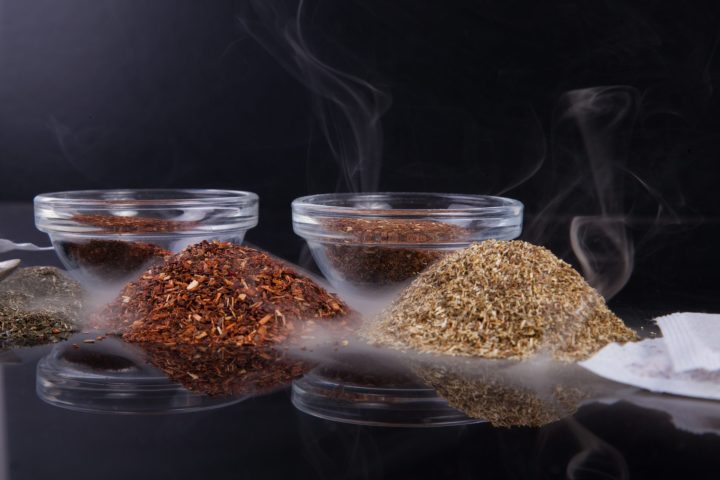MAIN INGREDIENT
Tea & Smoke: Sorcery in the kitchen

Smoke knows no borders or boundaries. Freed from tea leaves smouldering with spices and sugar, it works its sorcery on the food we surrender to it.
This column accompanies this recipe.
Smoke conspires. Smoke is a temptress and a sorcerer. It emits in curls and wisps. Ethereal, whimsical, it floats and drifts in and out of itself, creating mesmerising patterns as if by an artist’s hand. Smoke’s beauty exists entirely in and of itself.
Smoke cares not whence it comes. Put a match to cherrywood or oak, rooikrans or kameeldoring, myrtle or bluegum, or set light to a tyre or last week’s garbage, and smoke will be there, whether sweet-smelling or foul. Smoke can be putrid or honeyed, perfumed or acrid, but when it weaves its magic, when smoke casts its spell on what you’re cooking, it reminds you of life itself, of the essence of living and being enchanted by your senses. And when people ask me, why do you write about food, this is why, because you’re writing about life itself, and the living of it.
The smoking of the peat gives the finest single malt whisky its peaty character. Corn cobs are burnt to smoke bacon and ham in North America. In Whitby on Yorkshire’s wild Jurassic coastline, kippers are smoked in Victorian smokehouses near the ruins of Whitby Abbey. I’ve eaten kippers bought from one of those sheds and they are sublime.
When choice enters the fray, we are privileged to choose what we will smell or taste. Light the incense to perfume the room, but what with? Frankincense or patchouli, sandalwood or Dragon’s Blood? Citrus or cinnamon, opium or cedarwood?
And when the object of creating the smoke is to entrance the senses and please the palate, smoke becomes a key weapon in the cook’s armoury. But where will we source our smoke, what element shall we set the match to to bring us the warm aromas that will twirl and beguile us and our food while the sorcery conspires to create flavour and temptation?
Here’s star anise and cinnamon, cardamom and clove; there’s lemon and naartjie peel, curls of orange zest and lime. Those pecan shells and pistachio husks look tempting too. All of them will add smoky nuance to the fish or the foul, the cheese or the sauce.
Smoking food has (somewhat annoyingly) become a trend. They’re even smoking water and milk now. Trends usually have me running in the opposite direction. But I never climb on a bandwagon; I’d rather be intrigued by this ancient art and explore its possibilities, reap its tantalising rewards.
And I’m thinking about the ancient Szechuan art of smoking duck with tea leaves. Tea, in the lore of smoking food, is as elemental as lemon to Hollandaise or bay to béchamel. If smoke is as integral to life and cooking as fire and water, tea is whatever you want it to be; the elements you choose dictate what the flavour will be. Combining the two, tea and smoke, is one of the ancient arts of cooking. Today our supermarkets offer all manner of tea: ginger root, turmeric, chamomile, mint and more. Explore those and experiment with them in smoking food.
And we can put the sorcery to work using things we probably already own. A wok. A Weber braai. A “hotel pan” (those deep stainless steel roasting dishes with lids). A strong metal pot with a tight-fitting lid. The conical lid of a wok used as a dome over meat on the braai with a smoke packet on the coals beneath it.
Given how ancient the art of smoking food is, and how it permeates every cuisine on every part of the planet in one way or another, there are many methods to do it and even more vessels, utensils, smokers and other gizmos, whether those with roots in the depth of antiquity or modern gadgets such as my hand-operated smoker which, rather than actually cooking the food, simply imparts a smoky flavour to it. These are the sorts of smokers we usually see on MasterChef Australia to give a quick lift to a dish that might be less impressive otherwise.
You can smoke cold, warm or hot, dry or with liquid, in upright drums or smokeboxes, electric smokers or trenches, and these barely scratch the surface. You can smoke beer or brinjals, pork or plums, salmon or salt.
Or you can smoke duck, with roots going back almost as far as anyone can remember. Like my tea-smoked marinated duck with a Karoo twist. Just for fun. DM/TGIFood
To enquire about Tony Jackman’s book, foodSTUFF (Human & Rousseau) please email him at [email protected]
SUBSCRIBE: Our Thank God It’s Food newsletter is sent to subscribers every Friday at 6pm, and published on the TGIFood platform on Daily Maverick. It’s all about great reads on the themes of food and life. Subscribe here.





 Become an Insider
Become an Insider
Comments - Please login in order to comment.